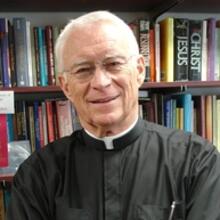Mission-Driven
If Protestants came late to missionary work, at least in part because of the Calvinist doctrine of predestination that made evangelization seem unnecessary, they more than made up for their tardiness in the late 19th and 20th centuries, and those they influenced have helped change the face of global Christianity. At the beginning of the last century, more than four-fifths of the world’s Christians lived in Europe or North America. Today, about two-thirds of them live outside those areas. This book, by Mark Noll of Notre Dame and Carolyn Nystrom, a freelance writer from Chicago, tells the stories of 17 men and women from Africa, India, Korea and China who played significant roles in planting Christianity in those countries. The authors acknowledge that their survey is fragmentary and preliminary. It is largely limited to those formed by the evangelical movement, though they include the stories of several others not easily categorized and of one Roman Catholic, Ignatius Kung Pin-Mei, bishop of Shanghai, who spent 30 years in prison, more than one-third of his life, for refusing to join the government-sponsored Chinese Catholic Patriotic Association. In 1979 Pope John Paul II named him a cardinal in pectore, though Pin-Mei did not learn of this until 10 years later.
The legacies of some were mixed. John Chilembwe, born in Malawi, studied for more than two years at Lynchburg, Va., where his contact with American racism radicalized his own views on race and justice. On his return to Africa, he worked to protect African rights and led an uprising against British colonial powers in Malawi in 1915. John Sung, a Chinese evangelist with a doctorate in chemistry from the United States, preached in a histrionic style like that of Billy Sunday; at one point he spent six months in a psychiatric hospital. Y. T. Wu (Wu Yaozong), a Chinese follower of the social gospel, moved from pacifism after Japan’s brutal occupation of much of China to an embrace of Mao Zedong’s Communism. The leading role he played in the growth of the “Three-Self Movement” was at the cost of other Christian communities that remained unregistered or belonged to larger ecclesial communions, even if it helped Protestant Christianity survive the dark days of Mao’s regime.
The stories of many in the book continue to inspire. Albert Luthuli, a Zulu chief born in 1898 in Bulawayo in what is now Zimbabwe, was a lay preacher inspired by the doctrine of creation in the imago Dei, the image of God. A leader in the African National Congress, he fought for justice all his life and received the Nobel Peace Prize in 1960. Janani Luwum, from northern Uganda, was a member of the Acholi tribe. As Anglican archbishop of Kampala, he worked regularly with Catholic leaders. After the diverting of an Air France flight to Entebbe airport and the dramatic rescue of its Israeli hostages, he became increasingly active in criticizing Idi Amin’s government, even though he continued to try to work with its representatives. He was murdered on Feb. 16, 1977, possibly by Amin himself.
Pandita Ramabai was a Hindu woman, born in 1858; after her conversion she devoted herself to the education of women and the securing of their rights. V. S. Azariah, born into a Christian family in the southeast of India, was an evangelist who contributed to the growth of the Y.M.C.A. in India and later became the first Indian bishop in the Anglican Church and its second non-Briton. Shi Meiyu, also known as Mary Stone, was born in Jiujiang to a family converted by Methodist missionaries; she studied at the University of Michigan. Returning to China as a medical doctor, she founded a hospital and later a nursing school at Jiujiang, which combined medical training with evangelism. Today her school is part of Jiujiang University, a four-campus institution with over 30,000 students.
A number of those whose stories are told have helped shape both church life and Christian theology in their countries. Some recognized the importance of developing a truly inculturated theology. Byang Kato, a Nigerian, early on saw the importance of developing a theology by and for Africans. Today there are evangelical theological schools and journals in Nigeria and elsewhere in Africa that reflect his influence. Others sought to establish indigenous Christian communities free of denominational entanglements. In India, Sundar Singh, a mystic born of a Sikh family in northwest India, sought to integrate Indian models of spirituality into his understanding of Christian faith. In his words, “Indians need the Water of Life, but not the European cup.” The “Three-Self Movement,” churches that were “self-governing, self-supporting, and self-propagating,” was not an invention of the Chinese Communist Party but grew out of the idea of indigenous local churches encouraged by missionaries like the Americans Rufus Anderson (1796-1880) and John Nevius (1829-93) and the British missionary Roland Allen (1868-1947). In China, missionaries like John Sung and W. T. Wu favored house churches, which are now growing rapidly in China.
Because of the evangelical focus of the book, Catholic missionary work is mentioned only in passing, but it was significant. Beginning in the 16th and 17th centuries, Jesuit, Franciscan and other Catholic missionaries in China and Japan created Christian communities that endured to modern times. In 1952, when Western missionaries had to leave China, there were one million Protestants and three million Catholics. These Christians paid a high price for their faith. An estimated 8,000 mostly lay Korean Catholics were killed in the mid-19th century. During the Boxer Rebellion (1900-1), some 4,000 Protestants and 30,000 Catholics died in China. But the remarkable stories of these African and Asian men and women, ordained and lay, professionally trained or charismatic, whose zeal and commitment planted the faith so widely is inspirational for Catholics as well as evangelicals at a time when the Catholic Church is becoming more conscious of its evangelical mission.
This article also appeared in print, under the headline “Mission-Driven,” in the April 25, 2011, issue.








